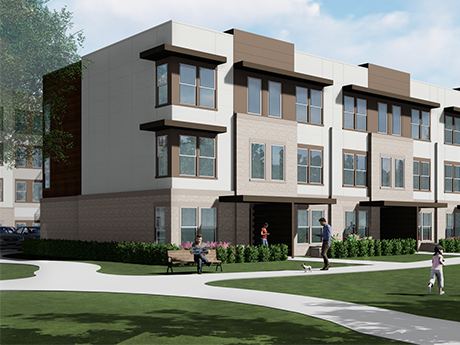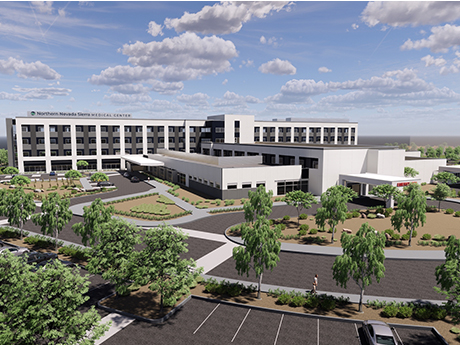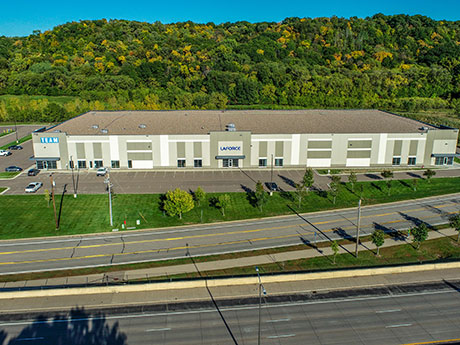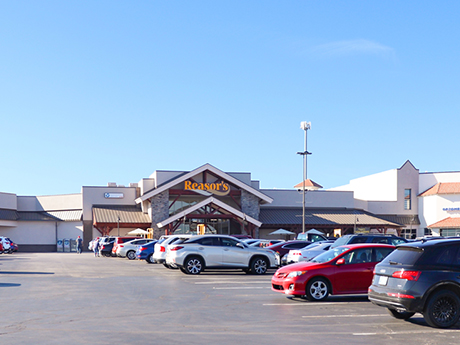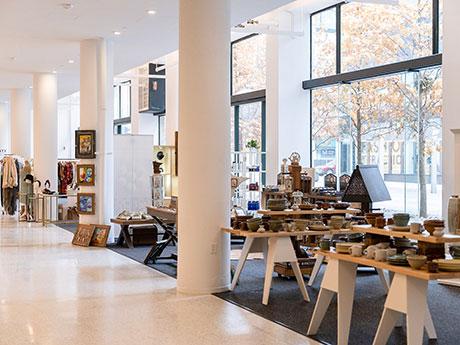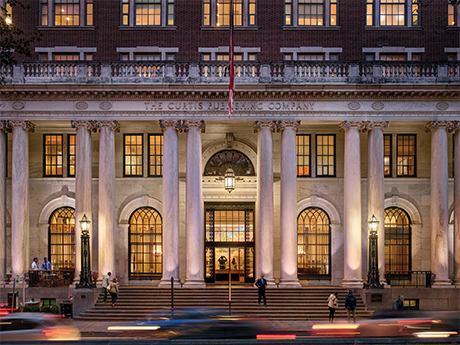By Tim Harris, vice president of multifamily development, Rosewood Property Co. San Antonio’s multifamily market is realizing its own potential. New nodes of development are emerging, and new projects are meeting pent-up demand for higher-quality renter experiences. Today, developers are building multifamily projects that they wouldn’t have considered five or 10 years ago. They’re no longer stuck in their comfort zones, afraid to venture into new submarkets. And they’re no longer worried that they won’t be rewarded with the rents necessary to provide differentiated properties with unit diversification, higher-end finishes and increased amenities. History, Affordability Historically, many institutional investors and national developers have overlooked San Antonio. Bigger and trendier Texas cities — Austin, Dallas-Fort Worth and Houston — have always overshadowed the Alamo City. That wasn’t always the case, though. In 1860, San Antonio was the largest city in the Lone Star State. It thrived as a center for the cattle industry until the 1930s, when its population fell behind that of Houston and Dallas, mostly because of the booming oil industry. Today, San Antonio’s metro area is the 25th-largest in the country with 2.6 million residents, according to Oxford Economics. Hispanics represent 55.1 percent of the population — the …
Market Reports
By Patrick Riggs, Senior Advisor, Office, Dickson Commercial Group The leasing market in Reno/Sparks is back on track following a strong end to 2021. The fourth quarter of 2021 concluded with an impressive 145,558 square feet of positive net absorption. This was the third straight quarter of positive net growth. Panasonic Energy stole the headlines in the quarter four with its 95,000-square-foot lease of 645 E. Plumb Lane in Reno’s central submarket. However, demand in the smaller office spaces under 5,000 square feet continues to be the driving force in this rebound. Local and regional companies with more flexibility to maneuver the pandemic were rewarded in 2020 and 2021 by capitalizing on aggressive landlord concessions. We are starting to see these concessions being rolled back as demand continues and vacancy nears pre-pandemic levels. The 2021 Reno sales market bounced back from 2020 with increases across the board in overall volume, price per square foot and number of sales. Both volume and the number of sales nearly doubled year over year. Average sales pricing is coming in at $300 per square foot, while new build-to-suit construction is over $400 per square foot with no slowdown in sight. Owner-users and office investors have been …
2021 has been an absolute whirlwind for the Minneapolis-St. Paul (MSP) industrial market. Plunging cap rates, liquidity growing faster than ever and a sharply felt shortage of new supply have defined the last year and will continue to define 2022. New faces on the development side are entering the market right and left to capture the huge profits to be had from the supply/demand imbalance. New construction has been stabilizing in six to eight months and institutions have ear-marked MSP as a forward-sale market. The following are a few of the salient trends that should be considered when contemplating the MSP industrial market. Liquidity growth Since the last trough in 2016, the MSP industrial market has experienced an average 30 percent year-over-year growth in sales volume. 2021 experienced nearly half a billion dollars more in industrial investment sales than 2020, according to Real Capital Analytics. Cap rate compression Over the last year, the MSP industrial market has experienced change unlike in any other year. Entering 2021, the low-water stabilized cap rate was 5.15 percent, but by year-end, that had sunk 82 basis points to 4.33 percent. Warehouse rates in the $8 to $9 NNN range, once rare, are now commonplace; …
By Joel Marcus of Marcus & Pollack LLP New York City has published three tax-year assessments since COVID-19 swept into our world. The New York City Tax Commission and New York City Law Department have had ample opportunity to reflect and refine their thinking on those assessments. The disease broke out in Wuhan, China, in late 2019 and soon spread around the world. Most of New York City noticed its impact in February and March of 2020 as businesses shut down at an accelerating rate, warranting government mandates and additional closures. So, what did New York City do for the 2020-2021 tax year? It significantly raised tax assessments. The Tax Commission and other review bodies refused to base their valuations upon the devastating catastrophic effects of COVID-19 that had ravished the city. Why do this? The answer is technical. New York City values real estate on a taxable status date, which is Jan. 5 each year. On Jan. 5, 2020, COVID-19 did not exist in assessors’ evaluation process. Nor did it exist in the review of assessments later in the year. Employment restrictions, mask mandates and lockdown requirements made it impossible to operate theaters, hotels, restaurants and many other businesses. …
By Lanie Beck, director of corporate research, marketing & communications, Stan Johnson Co. Situated on the banks of the Arkansas River in northeast Oklahoma’s Green Country, Tulsa is a hidden gem for residents, employers and commercial real estate investors. Once recognized as the oil capital of the world, Tulsa has become a growing economic base for a variety of industries, including energy, finance, aviation, telecommunications and technology. Attractions and features of the city include the historic Route 66, the Philbrook and Gilcrease Museums, an Art Deco-inspired downtown, the award-winning Gathering Place Park and a vibrant resurgence of intown neighborhoods. Business, Population Boom Tulsa’s central U.S. location and operating costs that run below the national average, as well as a cost of living that is one of the lowest in the country for metro areas, make it incredibly desirable for businesses of all sizes. To help drive awareness during the pandemic, the city launched a rejuvenation project called “Tulsa Remote” that provided financial bonuses to attract more affluent remote workers and enhance the city’s diversity and community. Tulsa’s attractive characteristics, combined with the metro’s active efforts, have contributed to a boost in population growth over the last few years. In 2021, …
Job Gains, Visitors Returning Jolt Retail Consumption in Phoenix, While Growth Projections Buoy Investor Sentiment
by Jeff Shaw
By Ryan Sarbinoff, First Vice President, Regional Manager, Marcus & Millichap Retail metrics in the Valley have soundly improved after enduring some turbulence during the health crisis. Through the first nine months of 2021, net absorption totaled roughly 1.6 million square feet, putting the market on a trajectory to record its highest annual count since 2017. More than half of that absorption was logged between July and September, indicating that momentum is building. Phoenix retail market is in a much stronger position heading into 2022 Several factors are driving the uptick in retail space demand. Metro employment surpassed the pre- pandemic peak by August 2021, spearheading consumers’ ability to spend. At the same time, more seasonal residents are returning to the Valley after many chose not to travel in 2020, while tourism is also progressing. According to the City of Phoenix Aviation Department, passenger counts at local airports increased by 67 percent year-to-date through September relative to the same period last year. All these underlying forces benefit retail spending, and ultimately fuel tenant demand. Longer-term outlook is robust, piloted by growth trends Phoenix is expanding at a swift pace, with the metro’s favorable climate, quality of life and job availability attracting new residents. From the beginning of …
By John Stater, Research Manager, Colliers Southern Nevada gained 15,400 industrial jobs between August 2020 and August 2021, according to the Nevada Department of Employment, Training and Rehabilitation. The logistics and wholesale sectors added jobs on a year-over-year basis, while the natural resources and construction sectors lost jobs. Unemployment in the Las Vegas-Paradise MSA was 8.3 percent in August 2021. Over the past 12 months, total employment in Southern Nevada increased by 55,600 jobs, a 6.1 percent increase. Southern Nevada lost 241,900 jobs between February and April 2020 and had regained 71 percent of those lost jobs by August 2021. Southern Nevada is in its third major wave of post-Great Recession industrial development, with 6.6 million square feet of product now under construction. The fourth quarter of 2021 could see 2.3 million square feet of product added to inventory. Projects scheduled for completion in the fourth quarter of 2021 are currently 58 percent pre-leased. Projects completed this quarter were 98.8 percent pre-leased when completed. Net absorption this quarter was a record 4.45 million square feet. This brought net absorption up to 9.79 million square feet year-to-date, higher than the previous record for annual net absorption recorded in 2017. Warehouse/distribution net absorption …
By Garrett McClelland, Vice President, JLL With a global pandemic still in flux, strong demand for Orange County industrial remained constant throughout 2021. As we start the New Year, signs of a slowdown are nowhere in sight. Orange County’s overall vacancy was at 2 percent last quarter, which ranks among the lowest nationally. Demand continues to outpace supply — with limited inventory bringing the vacancy rate down and driving rents to historic highs. With very few viable options, tenants are forced to settle for anything that will satisfy their needs, or renew. Given this, developers have gotten creative to find solutions and build new industrial product in primary submarkets. The primary target for industrial developers in Orange County has been Class B and C office buildings located on industrial-zoned parcels. For example, Duke Realty recently bought a primarily vacant 100,000-plus-square-foot office building in Brea. The building is situated on 5.8 acres and is planned for a new modern warehouse industrial facility. According to JLL Research, out of the 12 conversion projects announced last year, nine were office to industrial. This shouldn’t come as a surprise as we’ve seen rapid rent growth in the industrial sector over the past 24 months. This has made office-to-industrial …
The metro Minneapolis retail real estate market is healthy overall coming out of 2021, with suburban submarkets on fire in many cases and urban submarkets generally subdued. A major overhang of supply was absorbed across the region last year as construction slowed dramatically, pushing retail vacancies down, rents up and sales prices of single and multi-tenant assets higher overall. It’s a testament to the market’s overall stability and resilience given the multiple waves of COVID, and events surrounding the George Floyd case that was prosecuted last year in the city. Work-from-home effect With many white-collar professionals still working from home and the center-cities tougher on mask mandates and vaccine requirements, the suburbs have shone the brightest. Vacancies were as low as 6 percent in some areas, with the overall market at 8.2 percent at year-end, according to the Minnesota Commercial Association of Real Estate/Realtors (MNCAR). Among the strongest performing submarkets have been Apple Valley, Maple Grove, Coon Rapids and Woodbury. The metro’s eight regional malls are generally faring well, unlike in some other markets across the U.S. that are more over-supplied. That said, there’s some adaptive reuse going on, including in the northwest suburb of Maple Grove where a freestanding …
By: Jamie Rash, Regional Director, Keystone Development + Investment Talk about a spark. When Spark Therapeutics announced plans at the end of last year to develop a $575 million gene therapy manufacturing plant in Philadelphia, it ignited the city’s evolution into a destination for the largest, most innovative life sciences firms in the world. Over $1 billion in venture capital (VC) investment is pouring into more than 50 Philadelphia life sciences companies that employ some 20,000 people, generating unprecedented demand for lab space. Supply is limited — even with 1 million square feet of lab space in development — and this supply shortage is driving some developers to capitalize on the demand by converting existing building stock. Moving Beyond Meds & Eds Philadelphia is a long-reputed “meds and eds” city, meaning it’s home to anchor institutions of higher learning and world-leading medical facilities that are known for innovation and opportunity. These institutions are major drivers of economic growth throughout the city. Previously, much of the activity in pharmaceuticals and biotechnology occurred in labs in suburban office parks and sprawling corporate campuses. In 2017, the city celebrated two cutting-edge, FDA-approved gene and cell therapies to treat specific types of cancer and …


